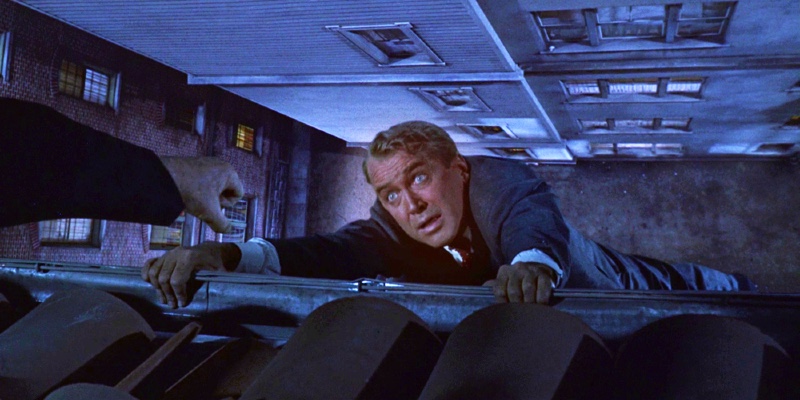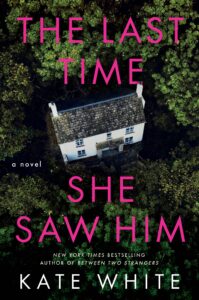The incredibly successful suspense author Harlan Coben once told me—with a chuckle—that he thought conducting research for a book was just another form of procrastination. Guilty as charged on some occasions, but in most instances the research I’ve done for all nineteen of my mysteries and psychological thrillers has been extremely beneficial to the process.
First and foremost, it helps me get my facts straight. Readers can be forgiving—to a point. They assume that as an author you might need to take some poetic license to move the plot along, but they also want to know that details you provide about everything from locales to characters’ jobs to crime scenes make sense.
But that’s not the only reason I do it. When I’m digging, I often come across information that inspires a great plot development, or even a killer plot twist.
Much of the research I do these days is online, but I also visit locations I’m writing about and talk to lots of experts, mostly on the phone, but sometimes in person if they can spare the time. I’ve not only interviewed plenty of cops, forensic experts, criminal profilers, lawyers, doctors, EMT workers, psychiatrists, psychologists, and real estate agents but also the occasional acting coach, magician, electrocution expert, and dog whisperer.
When I’m researching, I’m mostly concentrating on what details can be used for background and what can come out of characters’ mouths, but later, away from my computer, I often realize that something I came across was just plain fascinating to have learned. I’ve even ended up using a few nuggets of wisdom in my own life.
Here are some of the most intriguing, weird, and/or quirky things I’ve discovered along the way.
1) DNA evidence has become an important tool in solving homicides, but here’s a point that’s been driven home for me during the dozens of interviews I’ve done with former death scene investigator Barbara Butcher, author of What the Dead Know: Learning About Life as a New York City Death Investigator: Many homicides are solved today not because of DNA but thanks to CCTV footage and/or cell phone data.
2) I’ve never featured a body language expert as a character in any of my books (hmm, maybe I should, though), but I’ve interviewed a few because I’ve found their research helpful when describing how characters move and gesture during conversations. Something I learned while writing The Fiancée: One way to convey power through body language isn’t with a particular gesture or facial expression but with stillness. When you move your head and arms too much (something acting teachers call “becoming entangled”), your body leaks energy and you come across as nervous and unsure.
3) Speaking of energy leaks, one supposed indication of a poltergeist, beyond the commonly cited “bumps in the night,” are unexplained cold spots. Because, according to one so-called expert, spirits draw heat and energy from a room. I don’t believe in ghosts, but cold spots now make me nervous.
4) In Hitchcock’s Vertigo, Detective Scottie Ferguson suffers from acrophobia, an extreme fear of heights, which I’m sure you’ve heard of or might even experience yourself. And you’re probably also aware that some people have a fear of snakes, or spiders or flying. But in researching phobias for my next book, I learned that there are hundreds of them, including, koumpounophobia (fear of buttons), lachanophobia (fear of vegetables), octophobia (fear of the letter eight) and philemaphobia (fear of kissing).
5) The protagonist in my 2020 novel, Have You Seen Me, is a personal finance writer, so for background I interviewed financial expert Jean Chatzky, CEO of HerMoney. During one of our conversations, she told me about a field of study I’d never heard of called behavioral finance, which examines why smart people do stupid things with their money. Chatzky says that the reason for a lot of stupid money behavior is that we’re wired for instant gratification, which can be hard to override. One coping strategy, she says, is to “trick yourself by setting up artificial roadblocks, such as unsubscribing from shopping emails, taking your credit card number out of the automatic one-click ordering, and using cash, which is psychologically harder to part with.”
6) If you’ve ever gone to the ER with a relative or friend who needed stitches, you were probably told to take a seat rather than stand by the person’s side. You might have protested initially, especially if the patient was your child, perhaps promising the doctor or P.A. that you wouldn’t be in the way and guaranteeing them that the sight of blood didn’t bother you. But what I learned from Paul Paganelli, M.D., a retired ER chief I’ve interviewed for almost every book, is that it’s not unusual for someone who swears he or she isn’t squeamish to actually pass out while watching stitches being done. Until the “take a seat” rule became commonplace, parents would frequently hit the ground, sometimes sustaining serious, life-altering head injuries.
7) According to some estimates, between twenty-five and fifty percent of people have experienced at least one episode of a distressing condition called sleep paralysis, which occurs most frequently as someone is either falling asleep or waking up. It involves a feeling of being conscious but at the same time unable to move or speak. For some it can include a feeling of extreme pressure on the body or a sense of being choked. Some have even reported having a sense of a witch-like creature perched on their chest. That’s why this phenomenon is referred to in someplaces, including Canada, as “old hag syndrome.”
8) In my 2022 novel, The Second Husband, the protagonist is a trend forecaster, and I interviewed several for background. Trend forecasters do research and surveys, but some of them also like to follow what trend forecaster Jane Buckingham calls “the rule of three:” If something catches your attention once, it’s chance; if you see it twice, it’s coincidence or a curiosity; but if you see it three times, it could very well signal a trend worth paying attention to.
9) I never stop having my eyes opened by Barbara Butcher, who during her years with the NYC Medical Examiner’s office investigated over five thousand death scenes. Here’s another insight from her, an observation about death scenes that I try to remember for real life: “What we need to know is around us for the taking as long as we are truly taking it in. The biggest mistake a death scene investigator can make is going in with a pre-conceived idea. Take your hands off your ears and put them over your mouth. Learn to listen, see, smell, and absorb everything around you without speaking your thoughts first.”
10) The protagonist in my current psychological thriller, The Last Time She Saw Him, is a career coach named Kiki Reed, and though I’ve written several books on career success myself, I touched base with several career coaches while writing the book. One expert, Eliot Kaplan, former VP in charge of talent acquisition at Hearst Magazines, told me that one of the biggest complaints interviewers have about job candidates is that they don’t seem enthusiastic enough (which is probably a result of nerves or trying too hard to seem professional and buttoned up). “Don’t be afraid to show how much you want a job,” he told me. In fact, he suggested, it doesn’t hurt to sit a little bit on the edge of your chair. I have Kiki suggest this to one of her clients.
11) A couple of books ago, I was writing a scene where the protagonist sat down with an attorney after she sensed she’d fallen under suspicion with the police for a homicide. To better write the scene, I asked acclaimed white collar defense attorney Susan Brune how she would advise my character. One piece of wisdom she says she offers defendants early on is: “research yourself, just as the police will be doing.” That way a client becomes aware in advance of what will be turned up. This would mean not only Googling yourself, but reviewing your online search history, phone logs, texts, emails, calendar, credit card statements, and E-Zpass history. Even if we aren’t under suspicion, it’s probably not a bad idea to occasionally check out the information that’s available about ourselves.
12) You’ve probably read or heard the wonderful Maya Angelou quote, “When people show you who they are, believe them the first time.” Forensic psychiatrist Karen Rosenbaum says that’s good advice, but so is a common misquote of the comment: “When people tell you who they are, believe them.” People, she explained to me, have blind spots when it comes to their own personality and motives and sometimes don’t realize that others may be put off by the truth of who they are. “They might blurt out things that are at the core of who they are,” she adds, “without realizing the impact it may have on the listener or audience. Like a governor who brags about shooting her dog.”
13) Here’s another other piece of information I learned researching and have tried to use in my own life. It came from a detective supervisor in a police department’s mental evaluation unit, whose job was to respond to people having mental breakdowns or threatening suicide: “In a crisis, we often have a little more time to react than we realize,” she told me. She said that in her career it had made all the difference to count to ten before acting in a crisis, using that time to think through the best strategy before responding, rather than just letting her adrenalin guide her actions.
***


















